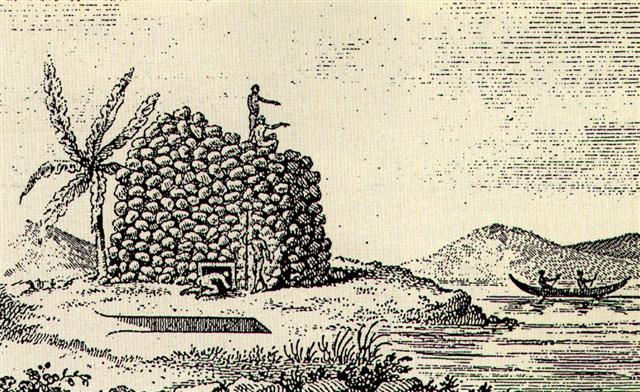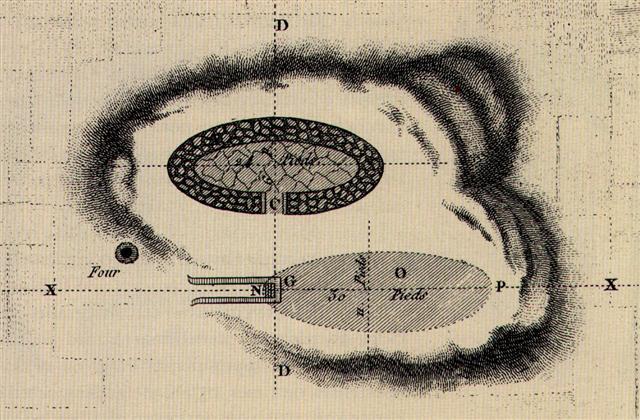Once again. In the G text °October 17 (290, *210) was at Ga6-10 (150), where according to the Gregorian calendar κ Virginis would have risen with the Sun at the time of Gregory XIII, i.e. 64 - 4 = 60 precessional days later than in AUGUST 18 (230, *150). There are 229 glyphs on side a of the G tablet and this might have been necessary in order to measure out 225 (= 15* 15) + 4 days.
Spica was both at the end of the Babylonian path for the Sun and at the beginning of the Chinese list. She was in the middle and the name Ana-roto was given to her. She was down in the top soil: 
The turtle glyphs could have indicated the surface of the earth, the 'Earth Turtle'. Spica was definitely a place for creatures living in the Middle World (not high up among the birds nor far down in the Sea with the fishes): ... An iconographic study by Jeff Kowalski suggests a cosmological layout for the Nunnery.
The higher placement of the North Building, with its 13 exterior doorways (reflecting the 13 layers of heaven), and the celestial serpents surmounting the huts identify it with the celestial sphere. The iconography of the West Building, with 7 exterior doorways (7 is the mystic number of the earth's surface), and figures of Pawahtun - the earth god as a turtle - indicate this to be the Middleworld, the place of the sun's descent into the Underworld. The East Building has mosaic elements reflecting the old war cult of Teotihuacan, where tradition had it that the sun was born; thus, this may also be Middleworld, the place of the rising sun. Finally, the South Building has 9 exterior doorways (the Underworld or Xibalba had 9 layers), and has the lowest placement in the compex; it thus seems to be associated with death and the nether regions ... (Michael D. Coe, The Maya.)
Glyph 385 (= 11 * 35 = 5 * 77 = 7 * 55) was designed like a mixture (tupa) between honu and Rogo:
… the interesting tower structure called tupa found in the coastal zone, had unknown functions, but … perhaps associated with the minor East Polynesian god called Tupa ... (Van Tilburg) ... Compare also the type of structure, mainly in the Lake Titicaca basin area, called chullpa and Easter Island's tupa, both apparently built as 'adoratorios', in which mummies, skeletons, and skulls were displayed and worshipped … where tupa would be the expected Polynesian revaluation of chullpa ... (W. Wilfried Schuhmacher, The Linguistic Aspect of Thor Heyerdahl's Theory.) A land crab (tupa) looks basically similar to a turtle (honu) and on Hawaii they said honua instead of henua.
|














